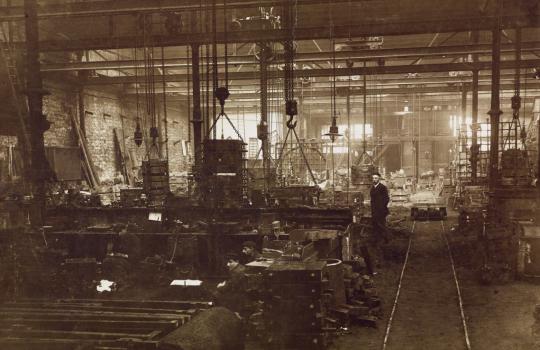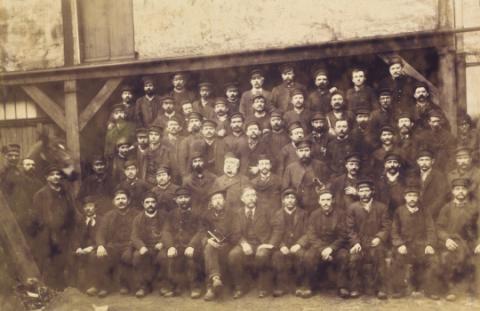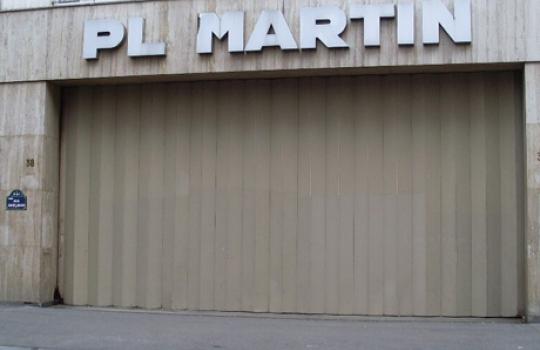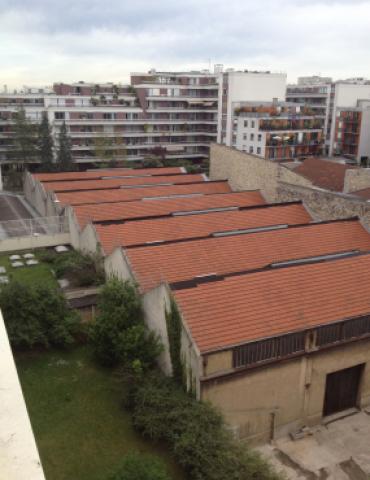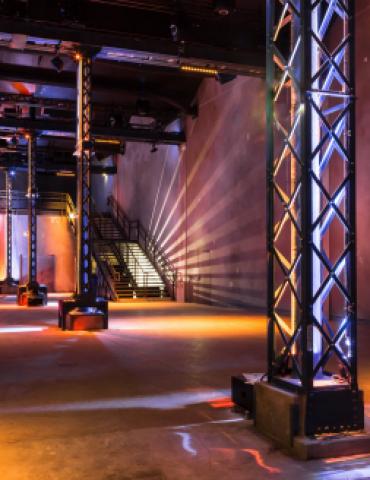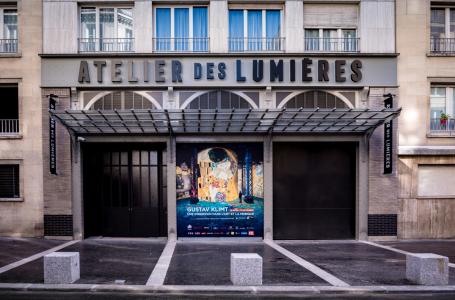Atelier
des Lumières
An historic area
The Chemin-Vert foundry was established in 1835 by the Plichon brothers, Jacques François Alexandre and Hilaire Pierre, in order to meet the needs of the navy and railway companies by supplying them with high-quality cast iron parts. Bruno Monnier, the President of Culturespaces, discovered the former disused foundry. He had the idea of creating a Digital Art Centre in Paris. After major renovation works, the Atelier des Lumières opened its doors to the public.
1835
The Chemin-Vert foundry
The Chemin-Vert foundry was established in 1835 by the Plichon brothers, Jacques François Alexandre and Hilaire Pierre. During the Industrial revolution, the two brothers, who came from a family of ploughmen, became founders.
1859
The success of the foundry
On 21 February 1859, Jacques François Alexandre passed the foundry on to his two sons, Jean and Edouard. They ran the company under the name Plichon Brothers.
1929
The closure of the foundry
The international crisis of 1929 spelled the end of the business, which was already facing stiff competition from welding and forging companies, and the manufacture of the first plastic materials.
2013
Rediscovery of the foundry
Bruno Monnier, the President of Culturespaces, discovered the former disused foundry and had the idea of creating a Digital Art Centre in Paris. The Martin family, which was interested in the project, agreed to rent out the great hall and its annexes to him.
The role of an art centre is to decompartmentalise, and that is why digital technology is so important in twenty-first-century exhibitions. Used for creative purposes, this technology has become a formidable vector for dissemination, and is capable of creating links between eras, adding dynamism to artistic practices, amplifying emotions, and reaching the largest possible audience
Bruno Monnier, President of Culturespaces
2018
Opening of the Atelier des Lumières
After major renovations (roofing, insulation, etc.), the Atelier des Lumières opens its doors to the public on April 13. In the first year, 1.2 million visitors discover the Atelier des Lumières.
2018 and beyond
Major exhibitions
Each year, Culturespaces organizes a long exhibition, a short exhibition and gives voice to artists in contemporary creations.
4 exhibitions in 2018
"Gustav Klimt" and "Hundertwasser, in the Wake of the Vienna Secession" by Gianfranco Iannuzzi, Renato Gatto and Massimiliano Siccardi, with the musical collaboration of Luca Longobardi, "POETIC_AI" by collectif Ouchhh and "Colours X Colours" by Thomas Blanchard and Oilhack.
3 exhibitions in 2019
"Van Gogh, the Starry Night " by Gianfranco Iannuzzi, Renato Gatto and Massimiliano Siccardi, with the musical collaboration of Luca Longobardi, "Dreamed Japan, Images of the Floating World" by Danny Rose and "Verse" by Thomas Vanz.
5 exhibitions in 2020
"Monet, Renoir...Chagall. Journeys around the Mediterranean" by Gianfranco Iannuzzi, Renato Gatto and Massimiliano Siccardi, with the musical collaboration of Luco Longobardi, "Yves Klein, Infinite blue" by Cutback, "Journey" by Nohlab and "Moments" by Melt. Special programs: "The last sentinels", photographs of Jimmy Nelson
4 exhibitions in 2021
"Dalí, The Endless Enigma" by Gianfranco Iannuzzi, Renato Gatto and Massimiliano Siccardi, "Gaudí, The Architect of the Imaginary" by Cutback and "Everything" by Nohlab. Special program: "Cosmos Destination, The Ultimate Challenge"
3 exhibitions in 2022
"Cezanne, Lights of Provence" by Gianfranco Iannuzzi, Renato Gatto and Massimiliano Siccardi, "Kandinsky, The Odyssey of Abstraction" by Virginie Martin and Cutback and "Recoding Entropia" by François Vautier - Da Prod.
3 exhibitions in 2023
"Chagall, Paris – New York" by Gianfranco Iannuzzi, Renato Gatto and Massimiliano Siccardi, "Paul Klee, painting musiic" by Cutback and "Convergence, Sounds and colors" by François Vautier - Da Prod.
